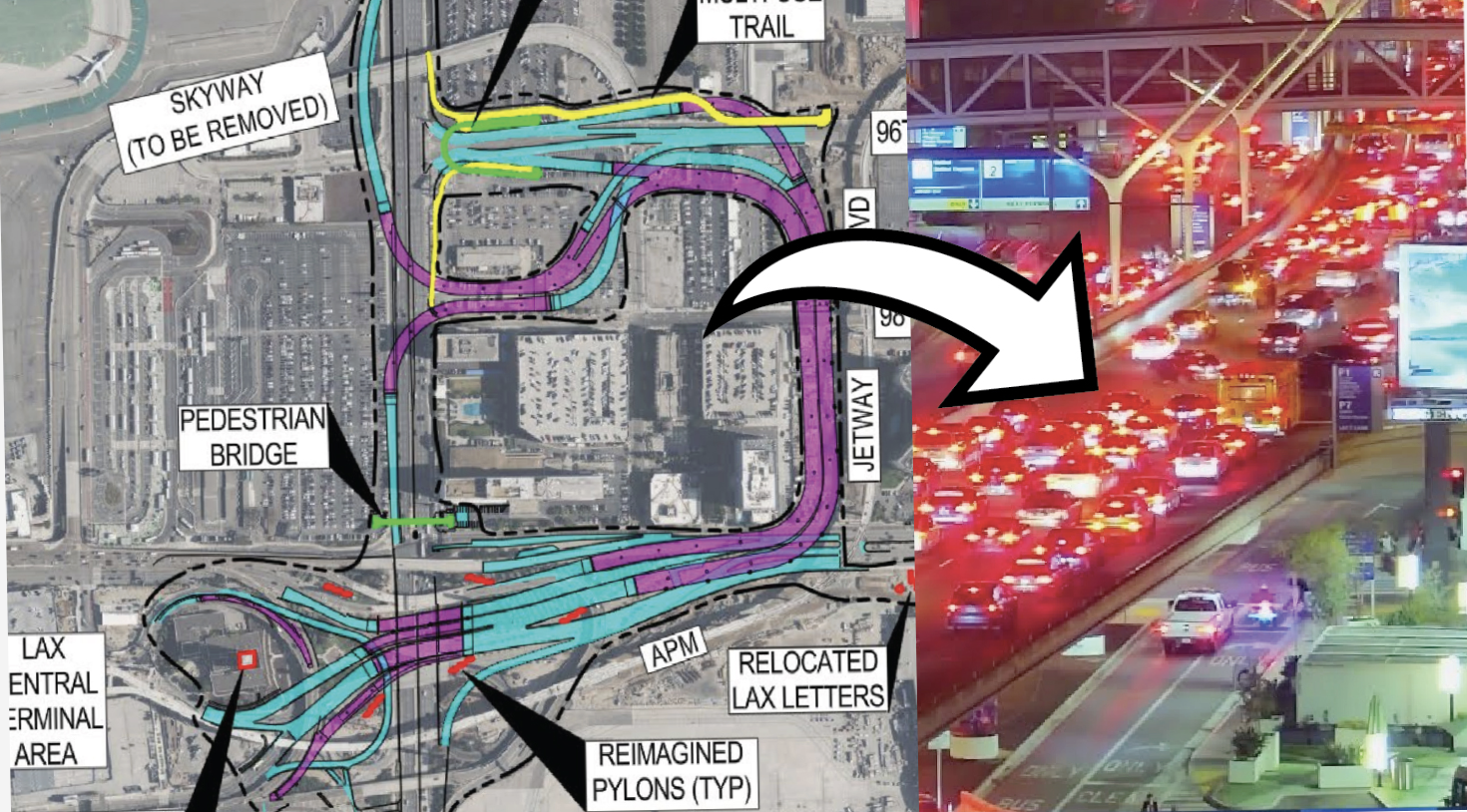Los Angeles World Airports is moving forward with a $1.5 billion expansion of roads and ramps around LAX that critics say will make congestion worse, not better. The Airfield & Terminal Modernization Project’s roadway component will add nearly six lane miles of new infrastructure, reconfiguring intersections at Century and Sepulveda boulevards and layering overpasses and ramps throughout the airport’s access network. Supporters call it modernization. Opponents call it gridlock.
The watchdog site LAXGridlock.com argues that the project is outdated, wasteful, and environmentally destructive. Designed before the pandemic, when passenger volumes were higher, the plan ignores current travel realities and the city’s own investment in the $3 billion People Mover expected to carry 30 million passengers a year. Environmental documents for the project acknowledge it will “induce additional vehicle miles traveled” and produce greenhouse gas emissions that are significant and unavoidable. A traffic study requested by LADOT concluded that the project would triple driver delay at Sepulveda and 96th Street and quadruple it at Sepulveda and Century, with no intersections seeing measurable relief.
The airport’s own record on project delivery deepens skepticism. The People Mover is already three years behind schedule, and phase one of the new roadway project must be completed before the 2028 Olympics to avoid major disruptions on Century and Sepulveda. Critics fear another round of missed deadlines, ballooning costs, and years of construction delays choking access to the airport and nearby neighborhoods.
The project also claims to enhance pedestrian and bicycle access, but those improvements are derided as token gestures. A new path along 96th Street reportedly connects “from nowhere to nowhere,” while a long, winding pedestrian bridge would replace an existing crosswalk with a quarter-mile detour. The plan even removes an entire sidewalk along the west side of Sepulveda in the name of “safety.” Accessibility advocates say the design would make it harder, not easier, for people walking or using wheelchairs to reach transit or terminals.
The site’s authors argue that the true source of congestion at LAX is not a lack of lanes but the airport’s dependence on personal vehicle drop-offs and pick-ups. Expanding the “throat” to the airport, they say, is like building the world’s most expensive cell phone waiting lot. They suggest that the $1.5 billion could instead be used to expand FlyAway bus routes, run more frequent shuttles, or improve connections to Metro’s Crenshaw/LAX Line, all of which would reduce emissions and traffic over time.
Los Angeles World Airports, which awarded early contracts to FlatironDragados and Skanska for pre-construction work, maintains that the improvements will ease congestion by separating local and airport traffic. Yet to many residents, the idea of solving gridlock by adding more lanes is a familiar and discredited one. The 405 freeway expansion a decade ago, intended to ease traffic, instead created years of disruption and little measurable improvement. Critics fear history is repeating itself.

